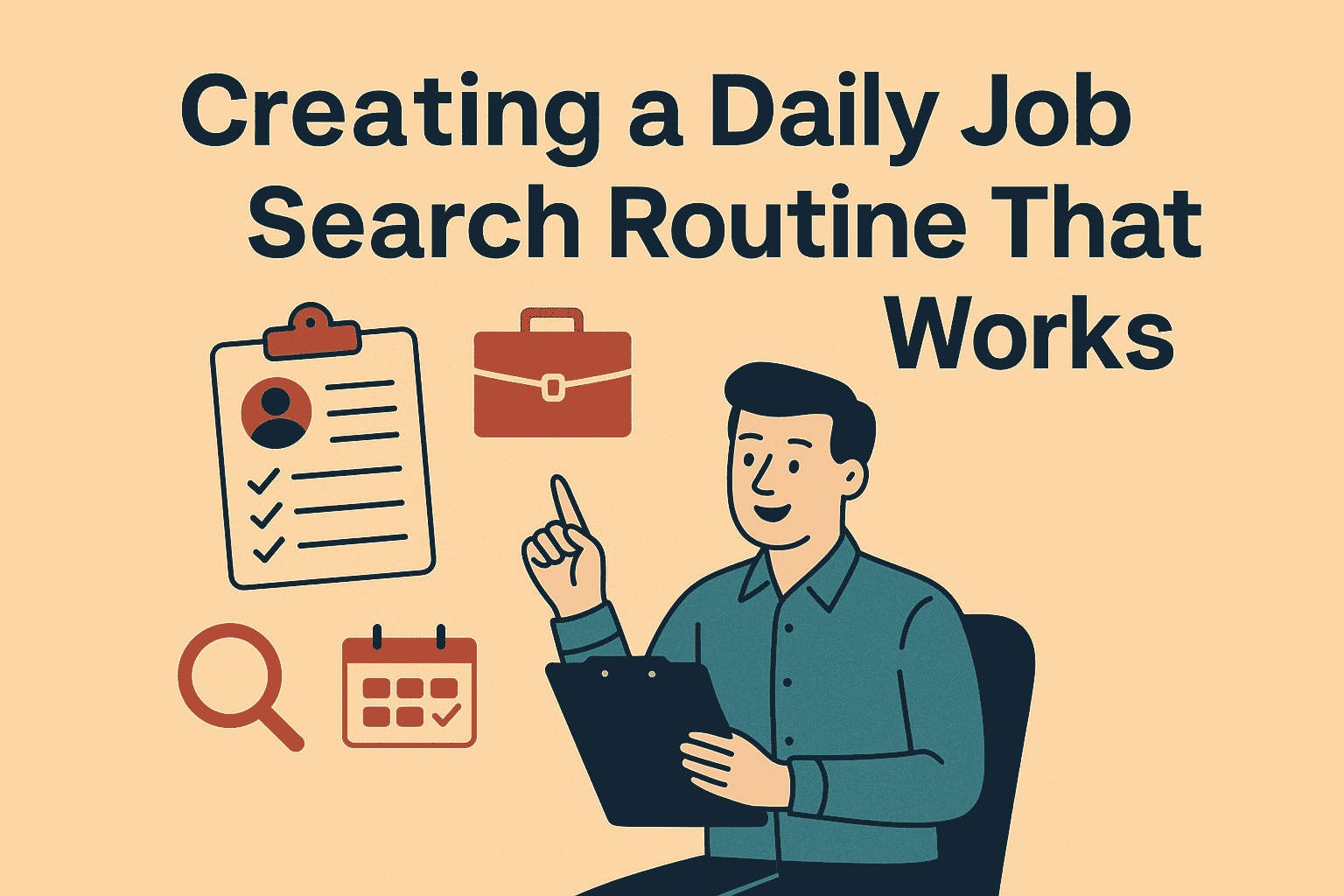Finding a new job can often feel like a full-time job itself. Without a clear structure, it’s easy to fall into a cycle of scrolling endlessly through job boards, sending out rushed applications, and burning out without results. That’s why building a daily job search routine isn’t just helpful—it’s essential.
A well-planned job search schedule can help you stay focused, organized, and most importantly, consistent, which is the secret to landing interviews faster. In this guide, we’ll walk you through how to create a realistic routine that actually works—and keeps you sane in the process.
Why a Job Search Routine Matters
Let’s face it: job searching without a plan is like navigating without a map. You end up wasting hours without making real progress. A structured job search routine provides clarity, reduces stress, and helps you hit daily goals without burnout.
It also makes the job hunt feel less overwhelming. Instead of treating it like a giant task, you break it into manageable, focused sessions—just like successful professionals manage their workdays.
Set Clear Job Search Goals First
Before you even open a job board, ask yourself: What kind of job am I looking for?
- Industry?
- Role or title?
- Location or remote?
- Salary expectations?
Then, use the SMART goal framework to turn that vision into action. For example, a SMART goal might be: “Apply to 3 marketing jobs daily and connect with 2 new people on LinkedIn each week.”
Don’t just wing it—track your goals using free tools like Notion, Trello, or a simple spreadsheet. Having clear targets keeps you focused and reduces the urge to procrastinate.
Your Ideal Daily Job Search Routine
Let’s break down what a productive job search day could look like. You can adjust the time blocks based on your schedule, but the structure remains the same:
Morning: Planning & Prep (30–60 minutes)
Start your day by reviewing your job search plan. Check your calendar, update your job tracker, and scan top job boards like LinkedIn, Indeed, and niche sites. Prioritize new listings and identify 2–3 jobs that align with your profile.
Tailor your resume and cover letter early while your mind is fresh. This small step can make a huge difference in your success rate.
Midday: Apply to Jobs (1–2 hours)
This is your action time. Send out 2–5 customized applications. Make sure you tweak your resume with relevant keywords from the job description.
Use a simple job tracker (Excel, Google Sheet, or Airtable) to keep tabs on where you’ve applied and when to follow up.
Afternoon: Network & Upskill (1 hour)
Did you know that up to 85% of jobs are filled via networking? Use this time to:
- Engage on LinkedIn
- Reconnect with former colleagues
- Join industry groups
- Take a short course or watch a webinar
You’re not just applying—you’re investing in yourself and building visibility.
Evening: Reflect & Recharge (15–30 minutes)
Wind down by reviewing what you achieved. Jot down a few notes in a journal or digital doc:
- What worked today?
- What frustrated you?
- What will you do differently tomorrow?
Also, don’t skip self-care. Mental health is key during a job search.
Top Tools for Job Search Organization
Here are some tools that can simplify your workflow:
- Notion/Trello – For tracking applications
- Grammarly – For error-free resumes and emails
- Teal HQ – For resume keyword matching and job tracking
- Google Calendar – For blocking job search time
- ChatGPT or Gemini – To rewrite resume bullet points and craft personalized cover letters
Using the right tools helps you stay productive without feeling overwhelmed.
How to Stay Motivated During the Job Hunt
Let’s be honest—rejections hurt, and silence is worse. Here are ways to stay strong:
- Join a job search support group
- Celebrate small wins (sending 10 applications, getting a callback)
- Practice positive affirmations
- Reframe rejections as redirections—every “no” brings you closer to a “yes”
The key? Keep showing up, even on tough days.
Common Job Search Mistakes to Avoid
Avoid these pitfalls to improve your chances:
- Sending generic resumes
- Forgetting to track applications
- Ignoring follow-ups
- Spending more time browsing than applying
- Not building a professional network
Each mistake can cost you valuable opportunities.
Sample Daily Job Search Schedule
Here’s a quick visual you can follow or customize:
| Time | Task |
|---|---|
| 9:00 AM | Review goals & check job boards |
| 10:00 AM | Tailor resumes & cover letters |
| 11:00 AM | Apply to selected jobs |
| 1:00 PM | Network & upskill |
| 5:00 PM | Reflect, track progress, rest |
Final Thoughts: Consistency Wins
The truth is, you don’t need to be perfect—you just need to be consistent. A strong daily routine can be the difference between months of frustration and that exciting job offer email.
Take control of your search. Set goals. Follow a daily plan. Adjust as needed. And most importantly—keep going.
Frequently Asked Questions (FAQs)
1. How many hours should I spend job searching each day?
Aim for 2–4 focused hours. It’s about quality, not quantity.
2. What if I’m not hearing back?
Re-evaluate your resume, application quality, and whether you’re tailoring to each role.
3. Should I apply if I don’t meet all the qualifications?
Yes! If you meet 70–80%, apply. Many employers value potential over perfection.
4. How do I balance job searching with a full-time job or school?
Use time blocking to set aside 1–2 focused hours in the morning, evening, or weekend.
5. What’s the best time to apply to jobs?
Mornings (between 6–10 AM) work best—your application lands early in recruiters’ inboxes.
